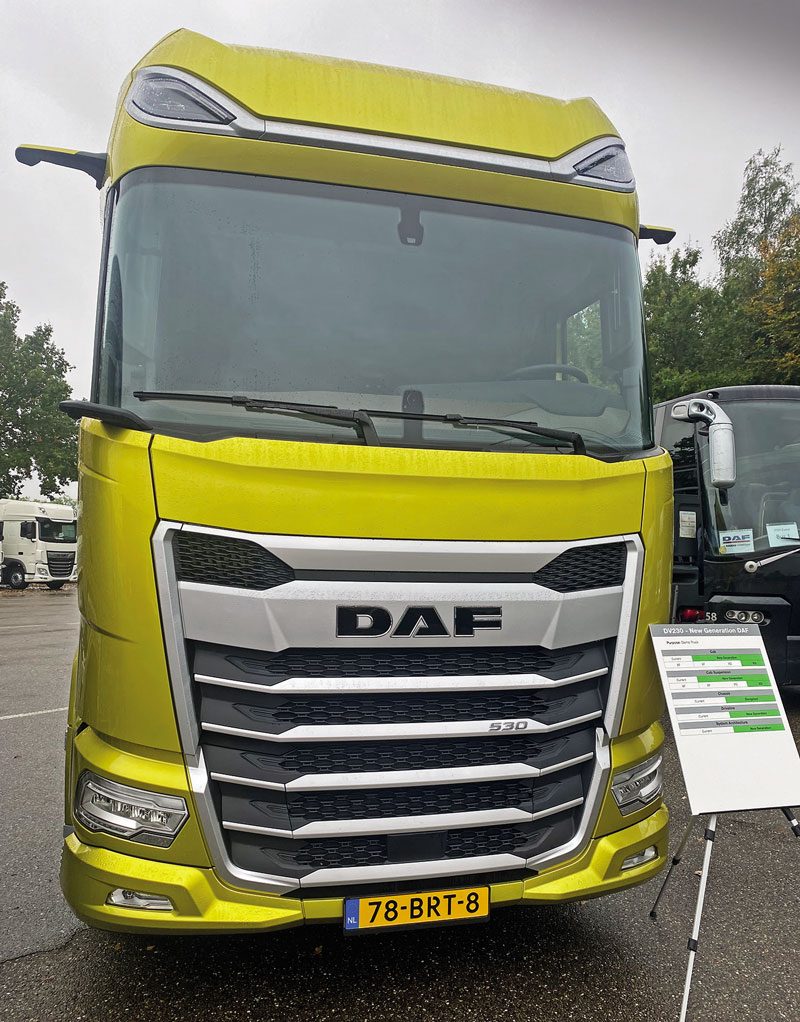Developing a DAF
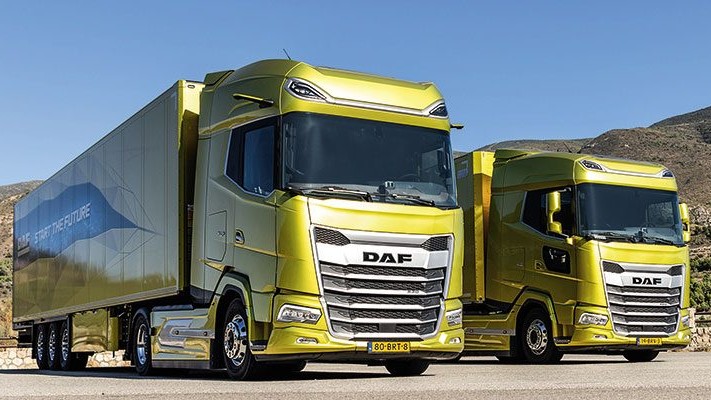
For as long as I’ve been writing about trucks, there have been rumours circulating that the European Union (EU) was going to relax truck dimensions rules and regulations. The 16.5m overall length limit for an artic had resulted in the typically flat-fronted cabover European- style truck being the norm. Of course, Scania did offer its T-series in Europe, but sales volumes were always low since they couldn’t legally run with a standard 13.6m semi-trailer.
Twenty years ago, truck manufacturers were pushing for change, and Scania even built concept vehicles for trade shows. It actively lobbied the European Commission for an additional 600mm at the front of the truck, which it said would make trucks safer and more aerodynamic. But its pleas seemed to fall on deaf ears.
Then, in 2014, there was a breakthrough, as the EU finally recognised that there was an opportunity to significantly improve the environmental footprint of trucks by making them more aerodynamic. It announced that by 2020, there would effectively be no overall length limit for new trucks. However, they would still be required to comply with strict turning circle regulations.
These changes came at the wrong time for most European truck-makers, who had recently introduced new- generation cabs. And having invested billions of Euros, they clearly didn’t relish the thought of starting all over again so soon. I certainly don’t recall Scania celebrating the EU’s decision.
But there was one company that was able to take advantage of the new regulations. DAF’s XF and CF cabs traced their origins back to 1987 and 1992 respectively, and despite numerous revamps and facelifts, were beginning to look their age. It was finally time to put a do-not-resuscitate order on them and look to the future.
Automotive designers often talk about “clean sheets of paper”, but in reality, such a thing rarely exists in the world of truck design. Most are forced to adapt an existing body in white, while even those with entirely new cabs must work within the strict confines of maximum dimensions. But, due to the legislation changes, DAF’s designers were in a unique position and did indeed start with something resembling a clean sheet.
Ron Borsboom, director of product development at DAF Trucks, tells me: “We couldn’t take our existing cab and make it longer, so we started from scratch. This was a unique opportunity for us to design and build a completely new class of truck.”
This was the start of a six-year development programme, culminating with the launch of the all-new DAF XF, XG and XG+ in the summer of 2021, and the XD in September 2022. On a trip to DAF’s Eindhoven headquarters in the Netherlands, I got an insight into the evolution of the new-generation trucks.
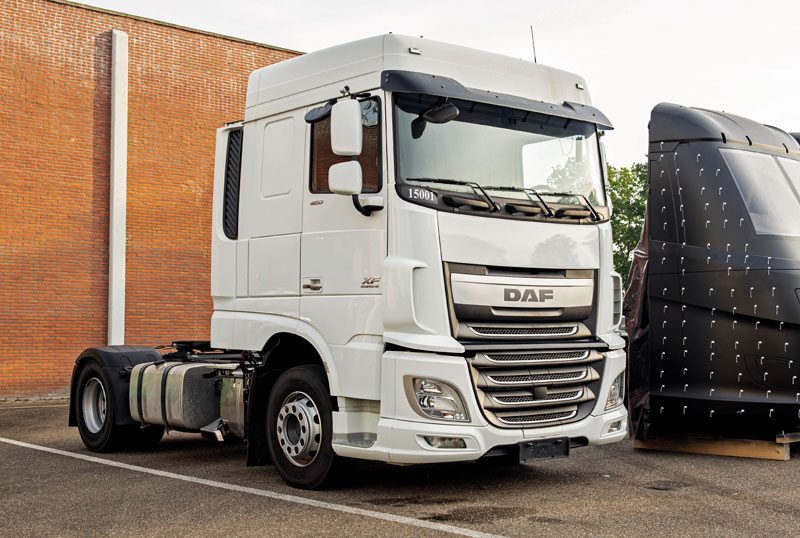
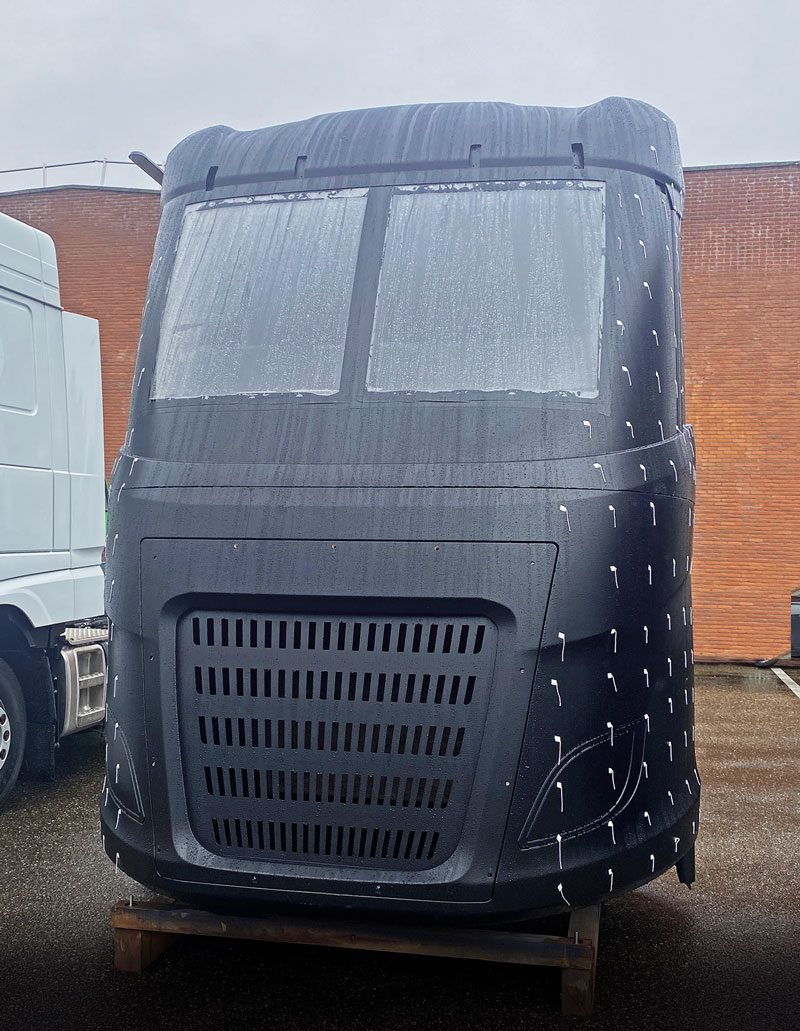
1 First steps
At first glance, this looks like a regular XF, but in fact, this 2015 test truck was the first step in developing DAF’s New Generation trucks. Knowing that the EU’s masses and dimensions rules were changing, DAF decided in 2015 that its next trucks would take advantage of the longer permitted length laws. While the 160mm protrusion on the front is immediately noticeable, less obvious is a slightly stretched chassis. It has also been fitted with a new cab suspension, an early version of the system that made it into the 2021 trucks.
“We wanted to know what would happen to the dynamics of the chassis if we stretched the truck,” explains Borsboom. “It was important to us that we actually improved the levels of steering comfort, ride and handling. So, this was an important milestone truck for us.”
2 Ruling nothing out
Coinciding with the longer cab and chassis development work, DAF also embarked on some major aerodynamic studies. Borsboom explains that back in 2015, nothing was ruled out, resulting in the development of this high-speed train-like nose. But this was dismissed when it was discovered that the aerodynamic gains were barely any better than when using a more subtle bulge. Other drawbacks included worse manoeuvrability, a higher production cost and a significant weight penalty.
3 Starting to take shape
The New Generation cab started to take shape in late 2015, this outer-skin model being one of multiple examples machined in-house at the time. It includes panel gaps, allowing engineers to study windflow.
“We needed to know what would happen as the air goes into the gaps,” says Borsboom, explaining that some of these models had tiny holes drilled into them to measure dynamic and static pressure changes.
“But with a cab like this, you cannot make doors. And the entry to this cab is not from the side, but from the rear. This was not because we took that as a serious potential alternative; it was just the simplest way of having the volunteer drivers going in and out.”
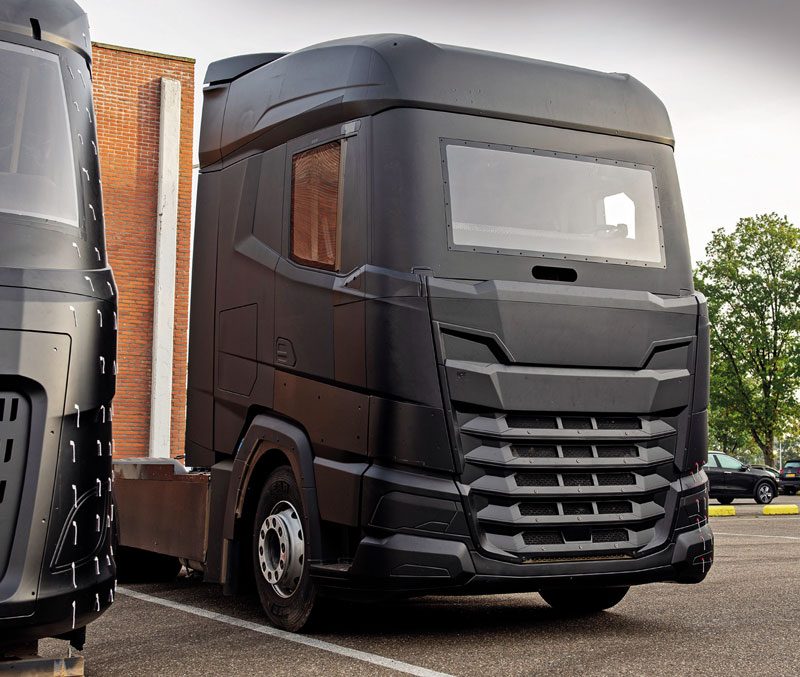
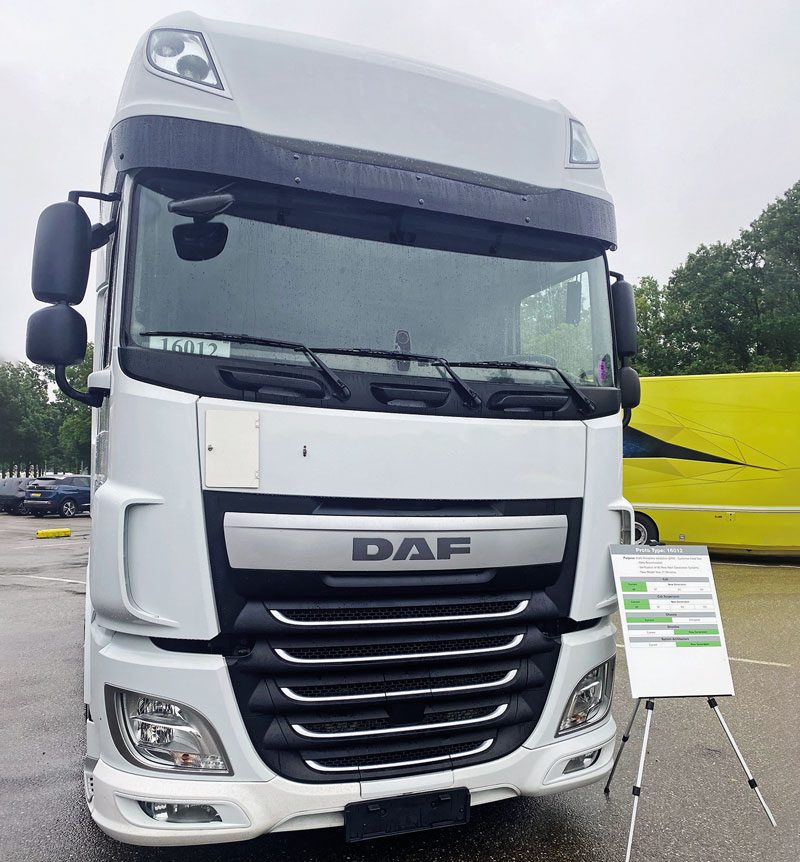
4 Field trials
“By 2016, we had started to think about the reliability of new architectures and new powertrain solutions,” says Borsboom, pointing to what looks like another bog-standard XF. “We couldn’t wait until the new truck generations were available, so we took a couple of XFs and modified them. We included the new 2021 type of engine and powertrain and the new system architecture, just to learn about what happens to them out in the field.”
The trucks were trialled on the road by real-world customers, one clocking up 500,000km alone.
5 Major milestones
Between 2017 and 2020, DAF started to build its first New Generation trucks. “What you see here are three milestone trucks,” Borsboom tells us. “Trucks are complex networks of systems and ECUs, and you cannot simply exchange parts in and out. So, through the development of the truck, we defined integration milestones.”
DAF needed to trial these trucks on public roads but clearly didn’t want to reveal any design secrets in the process.
The original XF cab is well over 30 years old, and as it underwent various updates over the years, so DAF dressed up new models to look like their predecessors, avoiding unwanted attention from spy photographers. However, this was no longer possible with the all-new cab, which explains the heavy camouflage seen here.
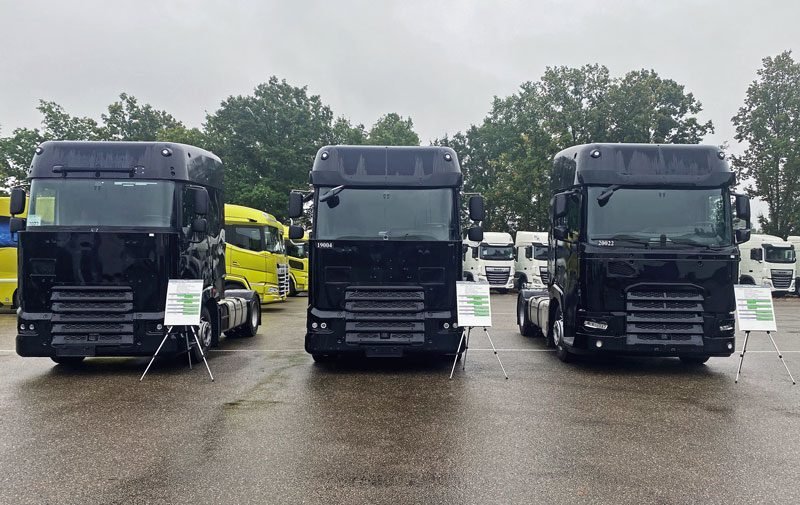
“Because this was an entirely new cab with entirely new dimensions, it was always going to be difficult to prevent people from seeing that it was a new cab. So, we decided we won’t hide the fact that the new cab is coming. But we will hide what it will look like,” he says.
The first two trucks here are fitted with aftermarket headlamps, but the third one, a pre-series truck from 2020, features the real lights, albeit partly concealed. Most of the vehicles from this era had 3D-printed dashboards which, as you can imagine, didn’t last particularly well. “We wanted to learn about ergonomics, where we wanted the vents, the switches and the buttons to be,” says Borsboom.
6 Cutting the camouflage
Eventually, it was time to remove the fake body panels completely, and in early 2021, migraine-inducing liveried trucks like this started appearing on Europe’s roads and in numerous social media feeds.
“For quality evaluation, we exposed the concept of the truck,” Borsboom explains proudly. “But we covered it with razzle-dazzle camouflage to hide the styling principles.” But it couldn’t hide the 160mm tapered front-end protrusion.
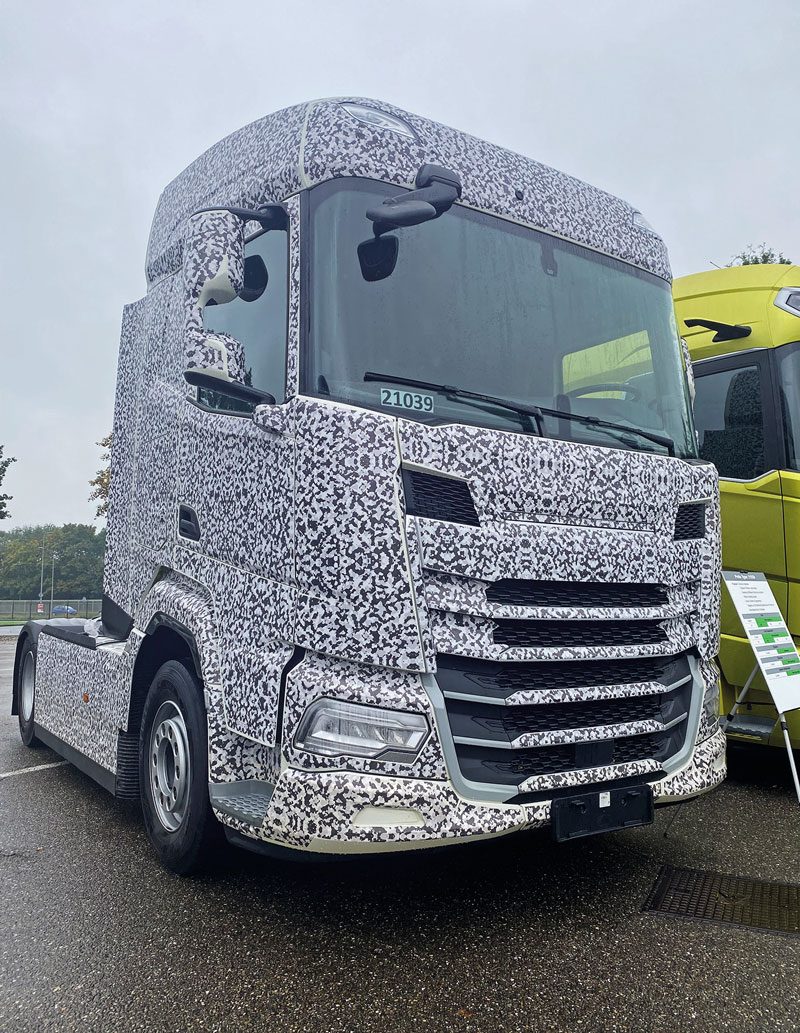
7 The finished product
Finally, we have the finished product, launched in the summer of 2021.
The final design, used on the front of all its New Generation trucks (XD, XF, XG and XG+), is a 160mm tapered protrusion. It gives a curved effect, allowing air to move more freely around the front of the truck, thus improving fuel economy. It boosts aerodynamics by 19%, equating to a 6.3% improvement in fuel economy compared with the prior XF.
Meanwhile, the XG and XG+ each get an additional 330mm of length at the back of the cab, while the flagship XG+ also has 200mm of extra roof height.
